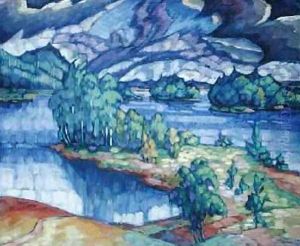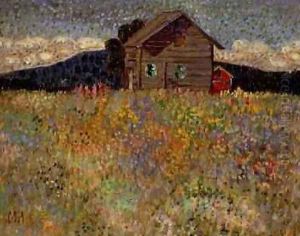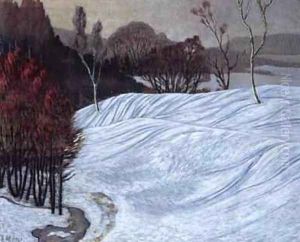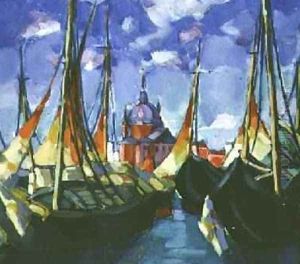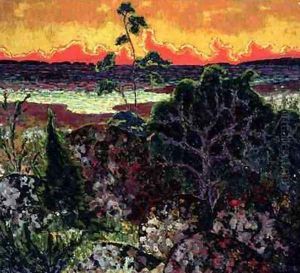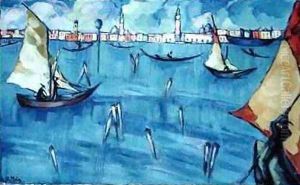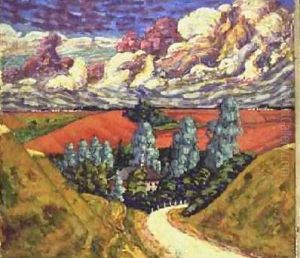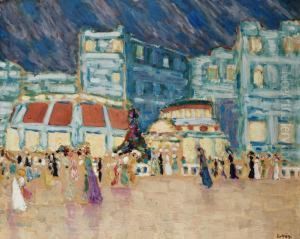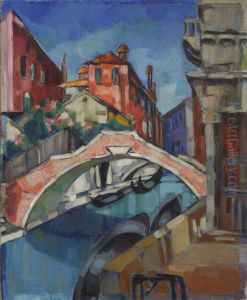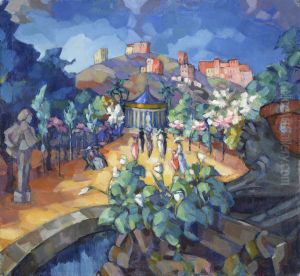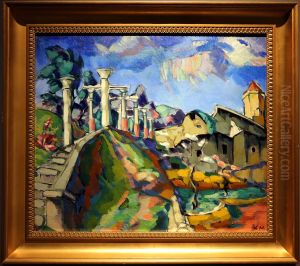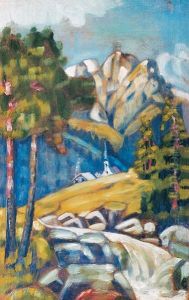Konrad Magi Paintings
Konrad Mägi was an Estonian landscape painter, born on November 1, 1878, in the village of Rüüspera, now part of Võru Parish, Võru County, Estonia. Though initially self-taught, Mägi's artistic talent and vision would eventually establish him as one of the pioneers of modern Estonian painting and a leading figure in the cultural life of Estonia during the early 20th century. His early work was influenced by impressionism, but he gradually moved toward a more expressive, almost mystical approach to landscape painting, marked by bold colors and dynamic brushwork.
Mägi's education in art started later in his life when he traveled to St. Petersburg, Russia, in 1903 to study violin. It was during this time that he became more seriously involved in painting. In 1906, Mägi moved to Tartu, Estonia, where he continued to develop his skills as an artist and became a central figure in the local artistic community. He was a founding member of the Tartu Art Society in 1907, which was instrumental in promoting modern art in Estonia.
In 1907, seeking further artistic education, Mägi went to Antwerp, Belgium, and later to Paris, France. His time in Paris, particularly his exposure to the works of Cézanne and the Fauves, had a profound impact on his approach to color and composition. Mägi's landscapes from this period are characterized by their vibrant palette and the emotional intensity of their execution.
Upon returning to Estonia, Mägi spent much of his time in the picturesque landscapes of Southern Estonia and the Estonian islands, drawing inspiration from the natural beauty. His works from this period are considered some of the finest examples of early 20th-century Estonian art, capturing the mystical and emotional essence of the Estonian landscape.
Despite his significant contributions to Estonian art, Mägi's life was marked by financial difficulties and health problems, including a serious mental illness that led to his hospitalization in 1916. He spent the last years of his life in various sanatoriums. Konrad Mägi died on August 15, 1925, in the psychiatric clinic in Tartu. His legacy, however, lives on, and today he is celebrated as a visionary artist whose works have had a lasting impact on the development of Estonian modern art.
